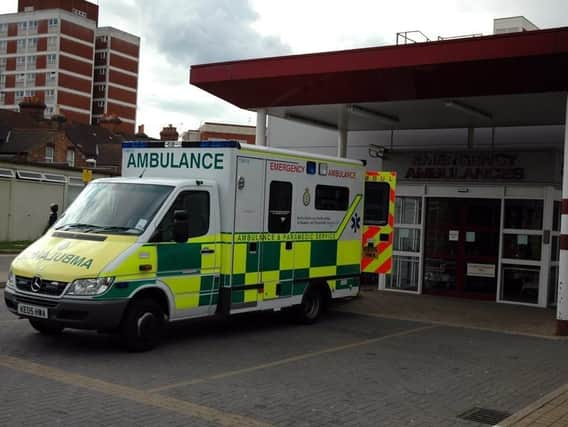Concerns over A&E waiting times


The trust's major A&E department is performing badly against the NHS national standard for waiting times in A&E.
The NHS target is for 95% of people visiting A&E to be discharged, transferred or admitted to a ward within four hours of arriving.
Advertisement
Hide AdAdvertisement
Hide AdAt the Northern Lincolnshire and Goole Trust that figure was 84%.
The 2017-18 report shows that the trust's major A&E department saw the equivalent of 369 people a day last year.
Around 134,600 people went to A&E, up from 133,500 the previous year.
Of these, 21,592 waited for more than four hours, from arriving in A&E to being discharged, transferred or admitted to a ward.
Advertisement
Hide AdAdvertisement
Hide AdDr Chris Moulton, vice president of the Royal College of Emergency Medicine, said that the pressure on A&E has "spiralled out of control".
"If you keep stretching an elastic band, eventually it will snap," he said. "You don't ask 'why did the elastic band snap' - it snapped because you stretched it."
He said that A&E departments were struggling to cope with the demands of a growing and ageing population, particularly since a lack of social care beds keeps elderly patients waiting in A&E.
He said that the more "badly stretched and understaffed" departments were, the more difficult it is to recruit junior doctors, creating a "vicious circle" of staff shortages.
Advertisement
Hide AdAdvertisement
Hide AdDr Moulton still supports the 95% target, saying that it's a "good pressure" on emergency departments to keep as few patients waiting as possible.
"Nobody wants to keep patients waiting," he said. "That's anathema to any emergency doctor."
According to Dr Moulton, the solution is simple - more acute hospital beds, increased capacity in social care, and the staff and facilities to keep those beds open.
He said: "It's not a magic formula. It's a blindingly obvious solution."
Advertisement
Hide AdAdvertisement
Hide AdIndependent health charity the King's Fund said that A&E performance is a "barometer for the overall performance of the health and care system".
Senior analyst Deborah Ward said: "A&E performance is influenced by activity and pressure in other services, affecting both the number of people going to A&E, and how quickly A&E can treat them."
"Some of the pressure comes from within A&E departments. Staff shortages are particularly concerning, and many have a lack of physical space. Some departments see twice as many patients as they were built for."